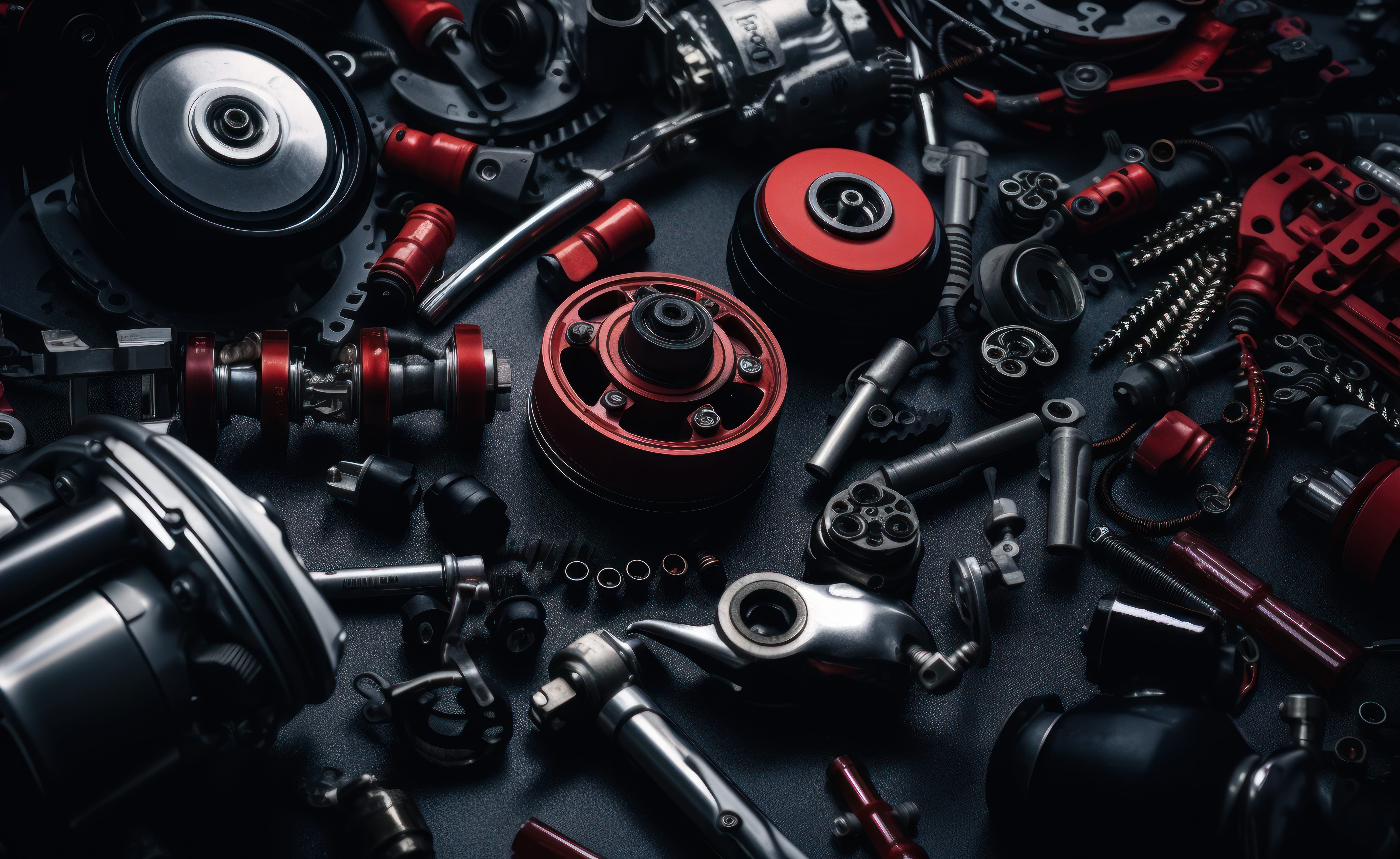
Maximizing Fleet Uptime: Strategic Sourcing
In the high-stakes world of commercial transportation, operational efficiency is not merely a goal but a requirement for survival. Fleet managers routinely face a pivotal financial dilemma: balancing the immediate cost savings of components against the long-term impacts on vehicle reliability and profitability. The strategic selection of heavy-duty truck parts transcends simple price comparison; it requires a deep understanding of the Total Cost of Ownership or TCO. TCO acts as the definitive financial metric, moving the procurement decision away from upfront costs and towards maximizing vehicle availability, minimizing unplanned repairs, and preserving asset value throughout the vehicle’s lifecycle.
The application of TCO modeling allows organizations to classify components not by their retail price, but by their overall economic contribution. This approach provides a clear justification for investing in high-quality OEM (Original Equipment Manufacturer) parts for critical systems and strategically utilizing high-grade Aftermarket alternatives for high-volume maintenance. A rigorous TCO analysis is the foundation of a modern, efficient fleet management strategy.
The Total Cost of Ownership (TCO) Framework
TCO represents the cumulative cost of an asset or component over its entire lifespan, not just the purchase price. For heavy-duty truck parts, TCO provides a comprehensive calculation that accurately reflects the true expenditure associated with maintaining a vehicle. Ignoring this framework results in poor procurement decisions that manifest as cascading system failures and excessive maintenance expenditures.
A comprehensive TCO model for truck components must integrate three distinct financial components: acquisition, labor, and risk.
Financial Pillar 1: Deconstructing Acquisition and Part Life
This pillar covers the direct, visible costs and the expected duration of the component. Strategic sourcing begins by evaluating the trade-off between the initial purchase price and the part's proven longevity and associated risk.
- Initial Purchase Price: The upfront expense of the part. This is the simplest cost but often the least reflective of the true financial impact.
- Expected Lifespan and Reliability: A key variable determined by the component’s design, manufacturing tolerances, and material quality. A lower-cost part may require replacement three times more frequently than an OEM or premium Aftermarket equivalent, quickly eroding any initial savings.
- Warranty and Guarantees: The value of the manufacturer or supplier-backed warranty. Longer warranties signal greater confidence in part durability and effectively reduce risk exposure for premature failure.
- Inventory Carrying Costs: The expense associated with warehousing, handling, insuring, and managing the stocking levels of spare components. This is especially relevant for fleets managing their own internal parts supply chain.
- Administrative and Procurement Overhead: The internal labor costs associated with identifying, ordering, receiving, and integrating the component into inventory management systems.
Financial Pillar 2: The Costs of Downtime and Labor
The most volatile and damaging costs associated with poor component quality are the hidden expenses derived from vehicle downtime and maintenance labor. These soft costs can easily eclipse the original price of the part.
Detailed Analysis of Unplanned Downtime Costs
Downtime represents lost revenue opportunities and significant fixed cost accrual. Calculating the precise cost of a truck being out of service is critical for TCO modeling:
- Lost Revenue Calculation: Daily Average Revenue (DAR) is the primary loss. If a truck generates $1,500 per day, a three-day repair costs $4,500 in lost gross income, regardless of the part cost. Furthermore, failure to meet delivery schedules can result in Contractual Penalties and Service Level Agreement (SLA) Violations, which can be attributed to faulty parts.
- Fixed Operating Cost Accrual: The truck continues to accrue debt, interest, insurance, and registration payments, even while sitting idle. Additionally, Driver Wages and Benefits often remain a fixed expense during repair periods.
- Expedited Freight and Recovery Expenses: This includes the cost of arranging alternative or emergency transport to complete the mission of the disabled vehicle (e.g., cross-docking, hot-shot delivery).
Comprehensive Labor Cost Analysis
Labor expenses are often underestimated. While the initial repair time is measurable, the cascading labor impacts of low-quality components are not:
- Initial Installation Labor: The standard time and shop rate required for the professional installation of the component.
- Recurrence Labor (The "Do-Over"): The labor cost of replacing a failed low-cost component a second or third time within the expected lifespan of a single high-quality part. This triples the repair labor expense and increases vehicle age.
- Diagnostics and Troubleshooting: When non-OEM components cause subtle performance issues (e.g., voltage irregularity from an electric & electrical part or inconsistent operation of brake valves), diagnostic time can increase significantly, delaying the identification of the low-quality part as the root cause.
- Tooling and Specialization: Costs associated with specialized training or equipment required for complex components like transmissions or high-tolerance engine parts.
Strategic Sourcing Models for TCO Optimization
A successful TCO-driven strategy is not about exclusively buying the cheapest or most expensive parts, but about matching the component's required performance and stress level to the appropriate sourcing channel which is either OEM or certified Aftermarket.
OEM Sourcing for Critical Systems
Original Equipment Manufacturer (OEM) parts are essential for systems where geometric accuracy, material composition, and precise electronic signaling are non-negotiable. These components directly impact vehicle safety, structural integrity, and core propulsion.
- Propulsion and Drivetrain: Critical components like transmissions, clutches, and axles must withstand enormous torque and thermal stress. The higher TCO of an OEM or premium equivalent is justified by the reduced risk of catastrophic failure and long service life.
- Engine Core and Support: Precision-engineered engine parts and specialized elements like turbo chargers and camshafts require exact metallurgical specifications to maintain optimal performance and fuel efficiency, directly affecting long-term running costs.
- High-End Braking Systems: For primary safety systems, such as core ABS breaks modules and complex brake valves, OEM sourcing ensures full system compatibility and reliability under extreme conditions.
Certified Aftermarket Sourcing for High-Volume Maintenance
Certified Aftermarket components are strategically utilized when the parts are consumables or are structurally non-critical, provided they meet strict quality standards for fitment and function. This strategy drives down overall acquisition costs without significantly increasing TCO risk.
- Fluid Management and Filtration: Items like filters and motor oils are volume purchases. Certified Aftermarket options provide significant cost reductions while still meeting or exceeding industry standards for contamination control and fluid performance.
- Auxiliary and Non-Safety Electrical: Components such as standard light & bulbs, simple electrical harnesses, and certain wipers can often be sourced through high-quality Aftermarket channels.
- Body and Cosmetic Integrity: Non-critical body parts and mirrors are frequently damaged and replaced. Utilizing certified Aftermarket alternatives allows fleets to maintain aesthetic and aerodynamic integrity economically after minor incidents.
Aligning Component Sourcing with Vehicle Lifecycle

The decision to use OEM or Aftermarket parts must align with the vehicle’s long-term fate, ensuring every dollar spent contributes to the fleet’s strategic objectives.
- New (Years 0–3): Protecting Initial Investment
- Strategy: Near-Exclusive OEM or Premium Aftermarket components are mandated.
- TCO Rationale: This approach is essential to maintain the original factory warranty, preserve maximum resale value, and achieve near-zero unplanned downtime. TCO efforts focus intensely on minimizing risk and labor costs.
- Mid-Life (Years 4–7): Balanced Performance and Cost
- Strategy: A Mixed Strategy is employed. OEM sourcing is reserved for critical, high-stress systems (e.g., transmissions, engine parts, brake calipers & kits), while certified Aftermarket options are used for high-volume wear items (e.g., filters, brake shoes, linings & kits, and u-joints).
- TCO Rationale: This phase focuses on labor avoidance. By ensuring reliability in core systems, the strategy mitigates the risk of expensive, recurrence-prone failures while leveraging cost efficiencies in routine maintenance.
- End-of-Life (Years 8+): Value-Driven Maintenance
- Strategy: Prioritize Value-Driven Aftermarket sourcing. The focus shifts to parts that ensure essential functionality and compliance, such as air springs, air dryers, and slack adjusters.
- TCO Rationale: The primary TCO goal is immediate savings and extending the vehicle’s service life at the lowest possible cost, as the asset is nearing retirement. All components must still maintain regulatory compliance and minimum safety standards.
All Truck Parts for Fleet Component Strategy
Successfully executing a TCO-based procurement model requires a trusted partner with a comprehensive inventory and deep product expertise. All Truck Parts serves as this essential strategic sourcing partner, removing the risk and complexity inherent in navigating the vast component landscape.
All Truck Parts maintains an extensive inventory, critically encompassing both OEM and high-quality Aftermarket solutions. This dual-sourcing capability is fundamental to enabling a TCO-optimized strategy. Fleet managers can rely on a single, expert source to supply high-precision, factory-specification engine parts and transmissions for core repairs, alongside rigorously vetted Aftermarket components like filters, brake shoes, linings & kits, and u-joints for routine maintenance. The partnership ensures that every procurement decision—from an essential clutch replacement to stocking motor oils—is aligned with the fleet’s specific TCO objectives for reliability and cost control.
Conclusion
The pursuit of maximized fleet uptime is fundamentally a financial challenge addressed through sophisticated procurement. By shifting the focus from the initial price to the Total Cost of Ownership, fleet managers gain the necessary framework to make economically sound decisions. Strategic TCO application dictates a disciplined approach: investing in OEM or premium certified equivalents for critical, high-risk systems, and applying validated Aftermarket solutions to lower-risk, high-volume consumables. This balanced, risk-mitigated strategy, supported by a partner capable of supplying the full spectrum of quality components, is the only sustainable path toward long-term operational excellence and profitability in commercial trucking.




